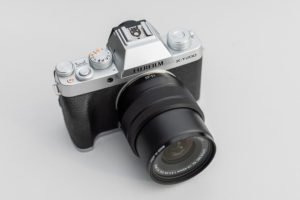With the best camera for hiking in hand, you can capture glorious photos while on the trail. But what is the best camera for hiking?
Well, you need a camera that produces excellent images. You might want extra features like video or high-res mode. But most importantly, you need a camera that can cope with life outdoors.
We recommend the Olympus OM System OM-5 as the best camera for hiking. It’s a compact and lightweight mirrorless camera. It’s packed with advanced features for breathtaking photos and videos. And it’s ruggedly built for extreme conditions.
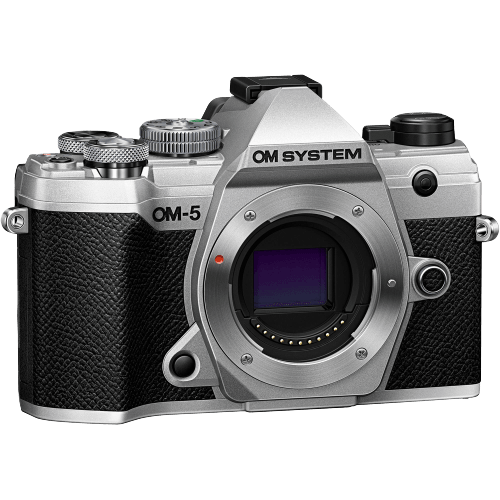
- Excellent 20.4 MP Micro Four Thirds sensor
- Handheld High Res Shot mode for stunning images
- 1,053 focus points in the autofocus (AF) system
- Built-in focus stacking and HDR features
- Weather-sealed for extreme conditions
[Note: ExpertPhotography is supported by readers. Product links on ExpertPhotography are referral links. If you use one of these and buy something, we make a little bit of money. Need more info? See how it all works here].
What Is the Best Camera For Hiking?
The best camera for hiking needs to be rugged and perform well outdoors. Exploring areas of outstanding natural beauty is one of the true pleasures of hiking. And it’s best to have a camera that captures the stunning scenery with breathtaking images.
The sensor size and megapixel count are important factors in image quality. But you must also look for good ISO ranges, image stabilization, and special shooting modes. These might include High Dynamic Range or High Resolution Shot modes.
Size and weight are important factors in a hiking camera. Of course, we recommend you use one of the best camera backpacks for hiking. But you still don’t want a camera that’s too big and heavy.
The best camera must be tough and durable, as hiking can be arduous. And you don’t want one falters as soon as you’ve set off. You should also think about the weather. Blue skies can turn grey in minutes. So hikers need a weather-sealed camera.
Here’s a rundown of the best cameras for hiking and backpacking. This is just an introduction before we look at each camera in more detail below. And we also have a FAQ section at the end for more information on cameras for hiking.

- Excellent 20.4 MP Micro Four Thirds sensor
- Handheld High Res Shot mode for stunning images
- 1,053 focus points in the autofocus (AF) system
- Built-in focus stacking and HDR features
- Weather-sealed for extreme conditions
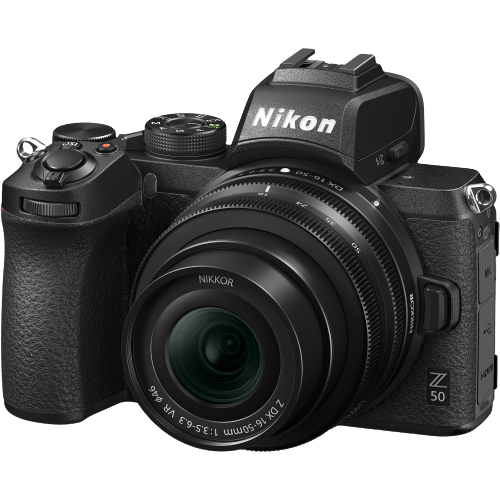
- Powerful image quality in a lightweight design
- 20.9 MP sensor with 4K Ultra HD video features
- Large 55mm lens mount for high image quality and low-light performance
- Selfie flip-down touch LCD screen for self-portraits and vlogging
- Wi-Fi and Bluetooth connectivity for easy transfer of photos and videos

- High-resolution lens and back illuminated CMOS image sensor
- Pro image processor, 4x zoom, macro shooting and underwater modes
- 4K movie and Full HD 120 frames per second (fps) high-speed recording
- Long battery life with up to 110 minutes of recording
- Waterproof, dustproof, shockproof, crushproof, and freezeproof
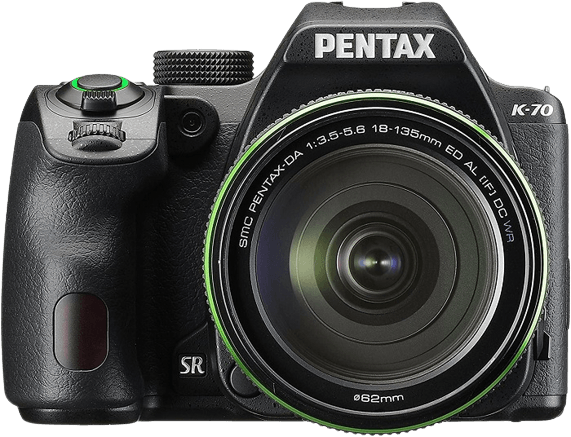
- Decent 24 MP APS-C sensor for entry-level camera
- In-body shake reduction (SR) for slower shutter speeds
- Vari-angle LCD screen
- Built-in Wi-Fi for easy photo sharing
- Weather-resistant, works in sub-zero temperatures
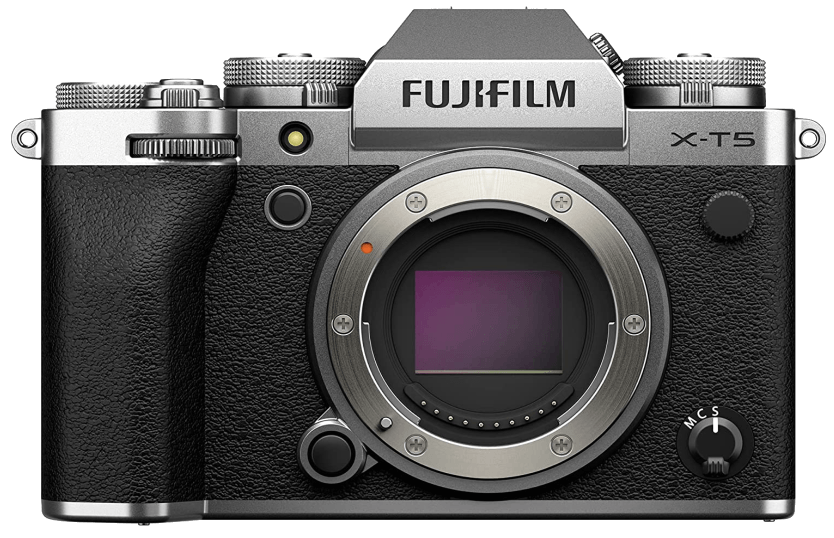
- High-quality 40.2 MP APS-C sensor
- In-body image stabilization
- Excellent 6.2K/30p in quality 4:2:2 format and 10-bit color
- 1.84 million dot, three-way tilting LCD
- Weather-resistant, compact, lightweight body
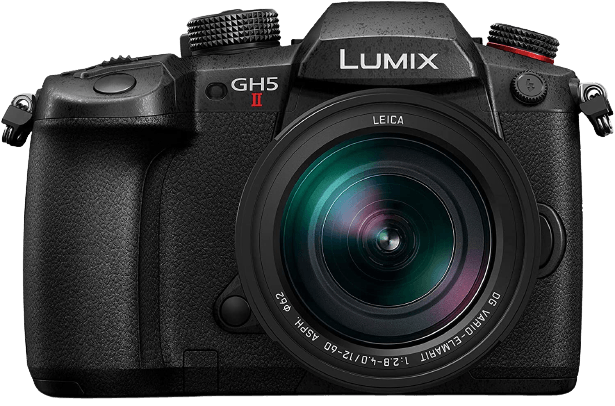
- 20.3 MP Micro Four Thirds sensor with excellent dynamic range
- 5-axis photo and video image stabilization up to 5 stops
- 4K/60p video and 6K Photo mode with 60 fps burst
- USB-charging and dual card slots
- Weather-sealed and functions in below-zero temps
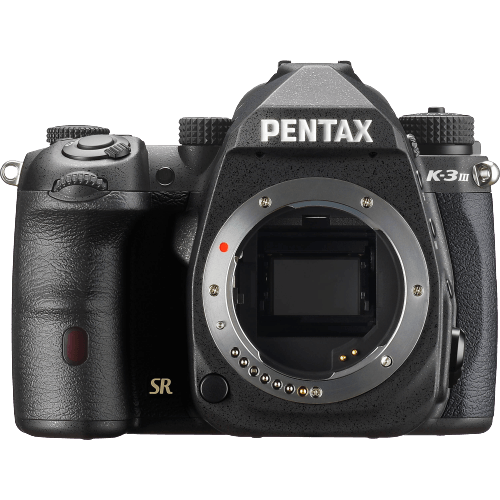
- 25 MP APS-C sensor with excellent low-light performance
- 5-axis image stabilization for blur-free images
- High-resolution and HDR modes, plus an Astrotracer
- Excellent in low light and super-wide ISO range
- Robust and wether-sealed body
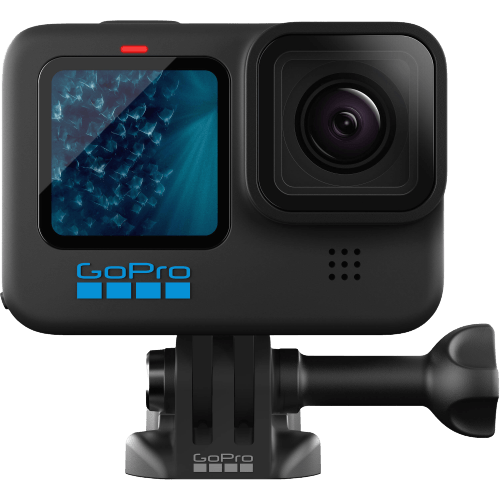
- 1/1.9" sensor and wide-angle lens for expansive field of view
- Unbelievable image quality with 5.3K video and 27 MP photos
- Hyper Smooth stabilization for silky smooth video
- 8x slow-motion at 2.7K and 60 fps burst mode for still images
- Waterproof, dustproof, and shockproof
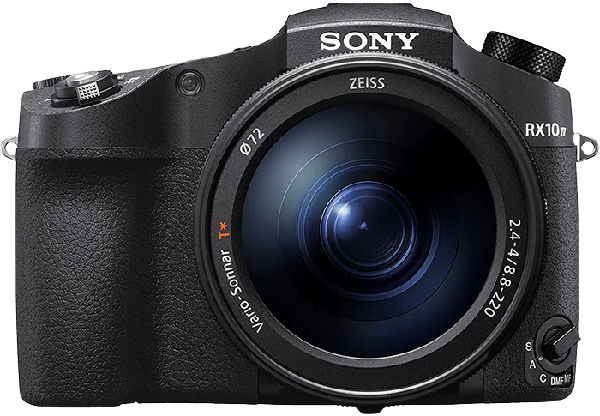
- 20.1 MP 1" sensor with vibrant details and colors
- 24-600mm f/2.4-4 Zeiss lens with 24x zoom
- Sony's SteadyShot optical stabilization
- Excellent AF system with fast subject tracking
- 24 fps continuous shooting—up to 249 frames
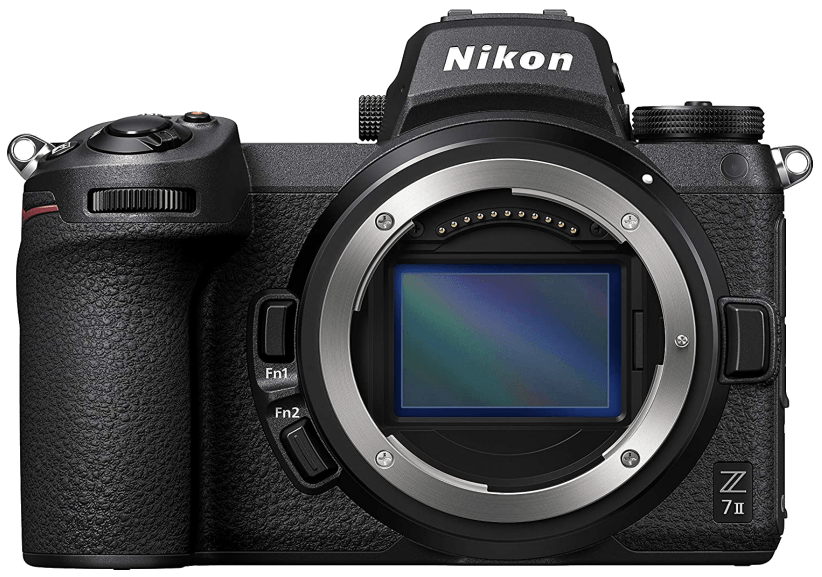
- Ultra-high resolution 45.7 MP sensor
- Built-in vibration reduction system
- 4K Ultra HD/60p and time-lapse video
- Dual image processors and dual card slots
- Weather-sealed body and weather-resistance compatible lenses
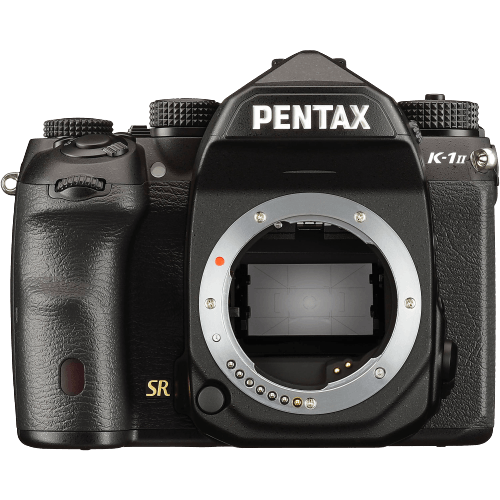
- Powerful 36 MP full frame sensor
- Built-in image stabilization
- Pixel-Shift Resolution mode for high-resolution images
- Engine Accelerometer gives you improved processing and faster focusing
- Rugged body with thorough weather sealing
11 Best Cameras for Hiking
Here’s our selection of the best hiking cameras in detail. There’s a wide range of cameras on the list. These include DSLR, mirrorless, and compact cameras. And we have full frame, APS-C, and Micro Four Thirds (MFT) cameras.
There’s a wide variety. But they are all well suited to the demands of hiking photographers.
1. Olympus OM System OM-5

| Released | 2022 |
| Sensor Format | |
| Lens Mount | Micro 4/3 |
| Megapixels | 20 MP |
| Autofocus Points | 121 |
| Maximum ISO (Native) | 25,600 |
| Frame Rate | 30 fps |
| In-body Stabilization | |
| Video | |
| Other Key Features | High-resolution shot mode, built-in HDR mode, focus stacking, weather-sealing |
| Best For | Hikers looking for a compact and robust mirrorless camera |
Olympus has now rebranded as “OM Systems.” But they are still producing outstanding Micro Four Thirds cameras. And the OM System OM-5 is the best camera for hiking and backpacking.
It’s compact and robust. And it’s packed with features for capturing incredible photos and media.
This camera has a Micro Four Thirds sensor. This sensor is smaller than the APS-C or full frame sensors. So the camera body is more compact and lightweight. That’s why MFT cameras are ideal for hiking, backpacking, and travel photography.
It’s also a tough little camera. It has IP53 protection, meaning it’s thoroughly weather-sealed and splashproof. You can keep shooting in the worst weather conditions. And you can even use it in temperatures as low as -10 degrees C.
The sensor has a 20.3 MP resolution. That’s great for a sensor of this size. You get vibrant colors and sharp details. It’s a big step up even from the most advanced smartphone cameras.
There’s also a more-power option if 20.3 MP isn’t enough. The camera’s high-resolution shot mode gives you stunning 50 MP images. It does this by creating a composite of several images. And you can shoot this handheld. You don’t need a tripod.
The built-in HDR mode is another highlight. Like the High Res Shot mode, it creates a composite of several images.
You can use three to seven images with different exposures. And the camera puts them together to make one HDR image. You don’t need any photo editing software.
The OM System OM-5 also has five-axis image stabilization. This counteracts camera shake, allowing you to shoot with slower shutter speeds. It’s ideal if you want to use a large depth of field. You don’t need a tripod to shoot epic landscape photography.
Like all the best Olympus cameras, it has excellent video features too. You can record fabulous 4K video with a smooth 30 fps frame rate. And you can shoot a vertical video if you need a vlogging camera.
You can also charge the camera using a USB cable. So you can charge it using a portable power bank when hiking!
Check out all the best Olympus lenses for this new OM System camera.
2. Nikon Z50

| Released | 2019 |
| Sensor Format | |
| Lens Mount | Nikon Z |
| Megapixels | 21 MP |
| Autofocus Points | 209 |
| Maximum ISO (Native) | 51,200 |
| Frame Rate | 11 fps |
| In-body Stabilization | |
| Video | |
| Other Key Features | 4K time-lapse mode, flip-down LCD screen, built-in flash, Wi-Fi and Bluetooth connectivity |
| Best For | Hikers looking for a vlogging and social media camera |
The Nikon Z50 is a fantastic mirrorless camera from Nikon’s Z series. It’s compact and lightweight. It has a good level of durability. And it produces excellent photo and video media. It’s ideal for hikers wanting to boost their social media strategies.
The APS-C sensor has a 20.9 MP resolution. And paired with the EXPEED 6 processor, the camera delivers fantastic photos.
You get an expanded ISO range to 204,800, which is great for low-light photography. But you also get a low ISO setting of 100, ideal for shooting landscapes and nature.
The video features make this one of the best vlogging cameras. The LCD screen flips down so you can record yourself. And the eye-detection AF makes sure you don’t go out of focus.
You can record 4K videos. And you get a selection of frame rates, including 30 fps in full resolution. You can even shoot Full HD slow-motion videos. So it’s a fantastic feature for shooting breathtaking natural beauty.
This mirrorless also gives you time-lapse video options. And it generates the 4K time-lapse video in-camera. You don’t need extra gear or software!
The Nikon Z50 also has some weatherproofing. It isn’t totally weather-sealed. But there is some protection against wet weather. That means it will be fine in light showers. But you will have to be careful in heavy rain.
3. Olympus Tough TG-6

| Released | 2019 |
| Sensor Format | |
| Lens Mount | Fixed |
| Megapixels | 12 MP |
| Autofocus Points | 25 |
| Maximum ISO (Native) | 1,600 |
| Frame Rate | 20 fps |
| In-body Stabilization | |
| Video | |
| Other Key Features | 4x zoom, underwater shooting and macro shooting modes, Full HD 120 fps video, fully waterproof, shockproof, freezeproof |
| Best For | Adventurous photographers looking for a tough, compact camera |
The Olympus Tough TG-6 is the best compact camera for hiking. It’s a durable option for a life in the great outdoors. It can take a beating. But it also has an excellent array of photography modes. So it’s a pocket-sized monster!
The TG-6 is tough by name and by nature. It’s completely waterproof down to 50 ft (15 m). It’s crushproof, dustproof, and shockproof. And it works without issue in temperatures as low as -10 degrees C. That’s one tough, compact camera.
It has a small one-inch image sensor. The 12 MP resolution won’t break any records for image quality. But the camera does have a great set of photography features.
There’s also a macro lens setting with four modes for macro photography. And it has five underwater photography modes.
The camera has a fixed lens. Its optical quality is excellent for a point-and-shoot camera. And it has a maximum aperture of f/2. That’s a fast aperture that gives you excellent performance in low light. Plus, it also gives you a 4x optical zoom range.
It’s a great action camera for recording adventure videos. You can record 4K videos. And you can shoot slow-motion videos in Full HD. That’s great for hiking and adventure videos. The battery is also long-lasting, with 110 minutes of recording time.
The Tough TG-6 is a true hiking camera. It isn’t only a media production machine. It also has built-in GPS tracking, a compass, and a thermometer. And it even has a barometer! It’s the total package for backpackers, hikers, and adventurers.
4. Pentax K-70

| Released | 2016 |
| Sensor Format | |
| Lens Mount | Pentax KAF2 |
| Megapixels | 24 MP |
| Autofocus Points | 11 |
| Maximum ISO (Native) | 102,400 |
| Frame Rate | 6 fps |
| In-body Stabilization | |
| Video | |
| Other Key Features | Shake reduction, vari-angle LCD screen, Wi-Fi connectivity, weather-sealing |
| Best For | Beginner photographers who love the outdoors |
Pentax has built its reputation on producing hard-working, durable DSLR cameras. That’s even true of their beginner cameras. And the Pentax K-70 is the perfect example. It’s an entry-level camera that’s easy to get to grips with. But it’s tough too.
This DSLR has a 24 MP APS-C sensor. That’s excellent resolution for a camera at this level. And the high dynamic range gives you even better detail.
The low-light performance is fantastic. And the camera has an ISO range from 100 to 204,800. That allows you to capture fabulous images when hiking in the early morning or late evening.
The camera also has a shake-reduction system. It’s an image stabilization system not often found in beginner cameras. It allows you to shoot with slower shutter speeds.
This gives you more control over your exposure settings. And it means you don’t need a tripod in your camera backpack.
The video features are the camera’s weakness. You only get Full HD recordings. But the camera does have Wi-Fi connectivity. That means you can share images with other devices wirelessly.
The Pentax K-70 is a tough camera. It’s fully weather-sealed for all-weather photography. The body has excellent build quality. And you can use it in sub-zero temperatures. That’s good news if you’re hiking in snowy mountains.
Pentax fans should also check out our list of the best Pentax lenses.
5. Fujifilm X-T5

| Released | 2022 |
| Sensor Format | |
| Lens Mount | Fujifilm X |
| Megapixels | 40 MP |
| Autofocus Points | 425 |
| Maximum ISO (Native) | 12,800 |
| Frame Rate | 15 fps |
| In-body Stabilization | |
| Video | |
| Other Key Features | Film simulation modes, vari-angle LCD touchscreen, weather-resistant |
| Best For | Hikers looking for state-of-the-art mirrorless with weather-sealing |
The Fujifilm X-T5 is the latest model in the Fujifilm X series. It looks fantastic. It’s packed with top-of-the-range mirrorless features. And it’s tough enough for a life on the hiking trail.
This mirrorless camera has a powerful 40.2 MP sensor. That’s incredible for an APS-C camera. And it isn’t just a number. It translates into images of outstanding quality.
The colors are rich and well-rendered. And the details are sharp in all areas of the images. It also has a low ISO of 125, an improvement from the X-T4.
The in-body image stabilization (IBIS) helps you achieve even better results. It gives you five stops of shutter speed compensation. And that improves photography in low light.
This means you can shoot landscapes handheld. And you don’t need a camera tripod or monopod.
The IBIS enables the mirrorless camera’s Pixel Shift Multi Shot mode. It’s a high-resolution mode that composites 20 separate frames to make one image.
You don’t need any software or post-processing. And it gives you images with a jaw-dropping 160 MP resolution. That makes this an ultra-high-resolution camera.
The Fujifilm X-T5 also gives you advanced multimedia features. You can record videos in superb 6.2K resolution at 30 fps. You also get a fast 20 fps burst mode with the electronic shutter. And it’s Wi-Fi connected for fast media sharing.
A robust outer shell protects all the high-tech features. And the camera is fully weather-resistant. So it’s tough enough for even the most testing mountain hikes. It doesn’t matter if the weather turns bad. It delivers sensational results!
6. Panasonic Lumix GH5 II

| Released | 2021 |
| Sensor Format | |
| Lens Mount | Micro 4/3 |
| Megapixels | 20.33 MP |
| Autofocus Points | 225 |
| Maximum ISO (Native) | 25,600 |
| Frame Rate | 12 fps |
| In-body Stabilization | |
| Video | |
| Other Key Features | Photo and image stabilization, 4K video at 60 fps, 6K Photo mode, USB charging, dual card slots |
| Best For | Hikers wanting to create professional photography and video media |
The Panasonic Lumix GH5 II is a multimedia machine. It’s a hybrid camera with fantastic features for photo and video production. It’s compact, so it doesn’t take up much room in your camera bag. And it’s weather-sealed for outdoor adventures.
It has a Micro Four Thirds sensor with a 20.3 MP resolution. It captures sharp images with intense colors. And the dynamic range is excellent for an MFT camera. The images can handle enlargement. And they look great when you get them printed.
The video features are just as impressive. You can record videos with a fabulous 4K resolution. And you get a 60-fps frame rate at full resolution. And it has quality 4:2:2 10-bit internal recording. So You can capture incredible video from the mountain trails.
This camera also gives you 6K photo mode. This allows you to take frames from video footage and use them as individual images. The images only have an 18 MP resolution.
But it provides you with a 60 fps burst mode. That’s fantastic for recording extreme sports like mountain biking or climbing!
Image stabilization is another bonus for photography and videography. It reduces camera shake. And this allows you to shoot with slower shutter speeds. It means you can shoot video handheld without a camera gimbal.
The Lumix GH5 II wouldn’t be much of a hiking camera without weather sealing. Thankfully, it has a durable design with weather-sealing on every joint, dial, and button. It’s dustproof for dry climates. And it works in sub-zero conditions.
It’s one of the best Panasonic cameras. And it’s Panasonic’s best camera for hiking!
7. Pentax K-3 Mark III

| Released | 2021 |
| Camera Weight | Array |
| Sensor Format | |
| Lens Mount | Pentax KAF2 |
| Megapixels | 26 MP |
| Autofocus Points | 101 |
| Maximum ISO (Native) | 1,600,000 |
| Frame Rate | 12 fps |
| In-body Stabilization | |
| Video | |
| Other Key Features | Pixel Shift Resolution mode, HDR mode, Astrotracer, weather-sealed |
| Best For | Photographers looking for a robust and powerful DSLR |
The Pentax K-3 Mark III is the most robust APS-C DSLR on the market. It has a brilliant selection of photography features. And it’s tough enough for even the most adventurous backpackers. That’s why it’s one of the best cameras for hiking.
The APS-C sensor gives you a 25 MP resolution. The image quality is excellent, with a true-to-life color rendition and a high dynamic range.
The low-light performance is particularly impressive. And the camera has a super-wide ISO range, giving you plenty of flexibility in changing conditions.
This camera is equipped with Pentax’s Shutter Step image stabilization. It’s a five-axis stabilizer that gives you 5.5 stops of shutter speed compensation. It’s ideal for hiking landscape photographers who don’t want to carry a tripod.
This DSLR camera also has a Pixel Shift Resolution mode. This creates a composite of several shots to give you one high-resolution image. It also has a built-in HDR mode. And it even has an AstroTracer for astrophotography.
You won’t find many cameras more robust than the Pentax K-3 Mark III. It has a magnesium alloy skeleton. And the outer body is thoroughly weather-sealed for even the harshest conditions.
It’s a bit on the heavy side. And the video features aren’t great. But it’s a great camera for a hiking photographer.
8. GoPro Hero11 Black

| Released | 2022 |
| Megapixels | 27 MP |
| In-body Stabilization | Electronic Image Stabalization |
| Max Video Resolution | |
| Other Key Features | Award-winning Hyper Smooth stabilization, long-exposure mode, still photos from videos, fully waterproof, dustproof, and shockproof |
| Best For | Hikers looking for an action cam for adventure photos and videos |
The GoPro Hero11 Black is the best action camera to date. It delivers outstanding photographs and video footage. It’s completely waterproof and durable. And it’s small enough to put in your pocket.
A GoPro might not come to your mind when you think of hiking. But its features make this one of the best hiking cameras.
This action camera features a fixed wide-angle lens that gives you a lovely field of view. And it has a small 1/1.9-inch sensor. But despite the small size, it gives you 27 MP images.
That’s a huge jump from smartphone cameras. And it’s even better than many DSLRs and mirrorless cameras. The video footage is even more impressive. You can record with a 5.3K video resolution. That gives you glorious video footage.
And the Hyper Smooth stabilization gives you shake-free footage no matter what you’re filming. Plus, the 60 fps frame rate makes the footage even more glorious.
The GoPro has excellent slow-motion video recording. You can shoot at 8x slow-mo with a 2.7K video resolution. You can also use single frames from video footage. It gives you a 60 fps burst mode with 24.7 MP images.
This is a durable action camera. It’s fully waterproof down to 33 ft (10 m). So you can shoot photos and videos underwater. Plus, it’s also dustproof and shockproof.
The small size also allows you to travel light when hiking. That’s why the Hero11 deserves to be on the list of the best cameras for hiking.
9. Sony Cyber-Shot RX10 IV

| Released | 2017 |
| Camera Weight | Array |
| Sensor Format | |
| Lens Mount | Fixed |
| Megapixels | 20 MP |
| Autofocus Points | 315 |
| Maximum ISO (Native) | 12,800 |
| Frame Rate | 24 fps |
| In-body Stabilization | |
| Video | |
| Other Key Features | Fixed Zeiss lens, 25x optical zoom, SteadyShot stabilization, macro mode |
| Best For | Hikers looking for an all-in-one camera that's easy to use |
The Sony Cyber-Shot RX10 IV is the best bridge camera for hiking. It gives you the convenience of a point-and-shoot camera. But you also get the photography features of a DSLR camera.
It’s one of the toughest bridge cameras on the market. And that makes it a top choice for hiking.
The one-inch sensor gives you a 20 MP image resolution. The colors are vibrant, and the details are sharp. And the image quality is enhanced by the quality of the lens. It has a fixed Zeiss lens with an impressive 25x zoom range.
It’s an optical zoom lens. So you don’t lose any image quality when you zoom in.
And it has Sony’s SteadyShot optical stabilization. This counteracts camera shake, giving you sharper images. It also has a macro photography mode for stunning nature photography.
The autofocus is excellent, using 315 phase-detection focus points. It’s quick to detect your subject. And it tracks them as they move.
You also get a 24 fps continuous shooting mode. And you can shoot up to 249 images at full speed. That’s perfect for capturing action shots.
It’s a hybrid bridge camera with 4K video recording. You can shoot with a 24- or 30-fps frame rate. And you get a 120 fps option when recording in Full HD.
The Cyber-Shot RX10 IV is perfect for a hiker looking for something simple. It’s easy to use. But it’s still packed with advanced features for photos and video.
It delivers excellent results. And it has some environmental sealing for protection against the elements.
10. Nikon Z7 II

| Released | 2020 |
| Sensor Format | |
| Lens Mount | Nikon Z |
| Megapixels | 45.75 MP |
| Autofocus Points | 439 |
| Maximum ISO (Native) | 25,600 |
| Frame Rate | 10 fps |
| In-body Stabilization | |
| Video | |
| Other Key Features | Vibration reduction, dual image processor, time-lapse video mode, dual card slots, rugged, weather-sealed design |
| Best For | Photographers wanting a pro-grade mirrorless camera for hiking |
The Nikon Z7 II is a powerful and robust mirrorless camera. It’s a hybrid machine that delivers for pro photographers and videographers. It’s more compact and lightweight than a full frame DSLR. And it’s tough enough for any hiking adventure.
The full frame sensor gives you a 45.7 MP resolution. That’s incredible image quality. And it’s more than enough for print media and gallery display.
The camera also has dual EXPEED 6 processors. These get even more information from each pixel. And the results are sensational.
Hiking videographers will also be impressed. You can record 4K video at 60 fps. And the camera has a built-in vibration reduction system for smoother video. You don’t need a camera stabilizer for smooth walking shots.
It also has time-lapse photography modes. It creates 4K videos from the photos in-camera. That means less time and effort in Adobe Photoshop or Capture One. And focus shift shooting is another handy feature you don’t see in many cameras.
The Nikon Z7 II is packed with handy features. The dual card slots allow you to shoot longer without changing your memory cards. There’s a 900-second exposure feature. And you can combine multiple exposures for dramatic images.
This is also one of the most rugged mirrorless cameras from any brand. It has a magnesium alloy body with thorough weather-sealing. It can cope with anything you through at it. And the best Nikon Z lenses also have weather resistance for outdoor use.
11. Pentax K-1 Mark II

| Released | 2018 |
| Sensor Format | |
| Lens Mount | Pentax KAF4 |
| Megapixels | 36 MP |
| Autofocus Points | 33 |
| Maximum ISO (Native) | 819,200 |
| Frame Rate | 4.4 fps |
| In-body Stabilization | |
| Video | |
| Other Key Features | Image stabilization, Pixel Shift Resolution mode, Astrotracer, weather-sealed |
| Best For | Hikers who need a powerful and robust full frame camera for photography |
The Pentax K-1 Mark II is Pantax’s flagship camera. It’s a full frame DSLR camera with a powerful sensor. It has pro-level photography features. And it performs at the top level even in harsh weather conditions.
The full frame sensor gives you images with a 36 MP resolution. The dynamic range is fantastic. And the wide ISO range gives you excellent options when light is failing. It also has an Engine Accelerometer to reduce noise and improve sharpness.
If a 36 MP resolution isn’t enough, the Pixel Shift Resolution mode gives you more power. It combines four separate exposures to create one high-resolution image. The results are staggering. And you can shoot in this mode without a tripod.
The five-axis shake reduction system also improves quality. It gives you sharper images. And it allows you to use slower shutter speeds with a reduced risk of motion blur. So you can shoot landscape photos with a deep depth of field handheld.
You won’t find many cameras more robust than the K-1 Mark II. A magnesium alloy frame protects all the advanced technology on the inside. And the outer body is completely weather-sealed.
It’s dustproof for ultra-dry conditions. And it’s freezeproof for adventures in cold weather. It’s a serious camera for serious hikers.
FAQs About the Best Cameras for Hiking
Finding the best camera for hiking isn’t easy. There are many things to consider. And hiking and photography aren’t natural bedfellows.
That’s why we’ve answered these FAQs. We want to give you all the information necessary to find the best hiking camera.
What Type of Camera Is Good for Hiking?
The type of camera you choose depends on what you want to achieve. And it depends on how much gear you want to take hiking with you.
DSLR cameras have excellent photography features. But they can be bulky and heavy. Mirrorless cameras are more lightweight. But you will need a bigger budget.
Compact cameras are small enough to put in your pocket. But you don’t get the manual features of a DSLR or mirrorless camera. Bridge cameras are a good compromise. They are easy to use, like a compact. But you get more advanced manual features.
It’s about finding the right balance that meets your needs. If you want to capture snapshots along the way, a compact or bridge camera will do. But you’ll need a DSLR or mirrorless for more control and advanced features.
What Do I Look for in a Hiking Camera?
Image quality is important in any camera. But a hiking camera needs to be able to capture your natural surroundings in all its glory. That means you want a camera with a high megapixel count.
Of course, a high MP count is relative to the sensor size. But it’s often a case of the more, the merrier.
Several cameras on this list have a high-resolution shot mode. It uses several images to create one high-res composite. It’s a great way of getting more power from your hiking camera. And you don’t have to lug a heavy medium format camera around.
The modern hiker might like video features too. Thankfully, we’ve listed several cameras with excellent hybrid features. You can capture incredible 4K footage along your mountain hike.
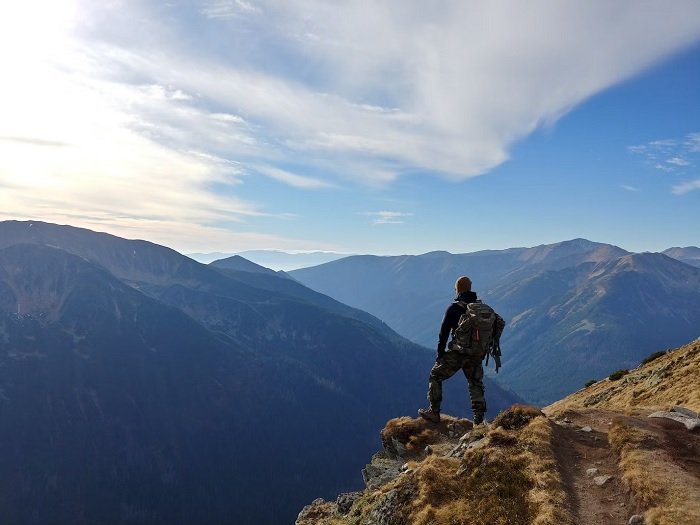
High Dynamic Range (HDR) and time-lapse modes are other features to look for. HDR images are fantastic for epic landscapes. And time-lapse videos are perfect for mountain sunsets. Astrotracers are also useful if you like astrophotography.
Lastly, durability is one of the most important factors in a hiking camera. Mountain weather can change at any moment.
You need to know your camera won’t break at the first hint of rain. The best cameras for hiking are fully weather-sealed and protected against the elements.
What Is the Best Way to Carry a Camera when Hiking?
No matter what camera you use, we recommend a good-quality camera backpack. Cameras and photography equipment are expensive.
And even if you have a robust camera, gear can still get damaged when you’re out and about. And that’s certainly true when hiking. You can see our full list of the best camera backpacks for hiking.
You also need a good camera strap. But you don’t want a loose one that leaves the camera danging while you walk.
A camera sling or harness is better suited for hiking photography. It keeps the camera close to your body. The camera is available at short notice. And it’s safe and doesn’t get in the way.
A hand-grip camera strap is another great option for hiking. It keeps the camera secure in your hands. That means you’re ready to shoot at any moment. And there’s little risk of dropping the camera.
Are Action Cameras Good for Hiking?
Action cameras are surprisingly good ones for hiking and backpacking.
That’s why we’ve included the wonderful GoPro Hero11 on our list. It’s a compact camera that takes up very little space in your pack. It delivers excellent photos and videos. And it’s a completely waterproof camera!
But you don’t have to go for a GoPro. We’ve compiled a list of the best GoPro alternatives. They give you excellent action camera options at more budget-friendly prices.
Conclusion: The Best Camera For Hiking
The best camera for hiking can handle the life of a mountain lover and still deliver outstanding media. We’ve given you a big list of cameras.
There’s everything from DSLRs to action cameras. There’s something for beginner, enthusiast, and professional photographers. And every camera on our list is tough enough for a hike in the wilderness.
But the Olympus OM System OM-5 is the best hiking camera. The MFT body is compact, lightweight, and robust. It’s weather-sealed. And it’s packed with advanced features for photos and video. So beginners to pros can make the most of it!



